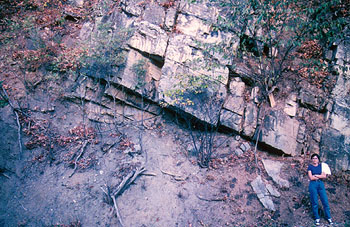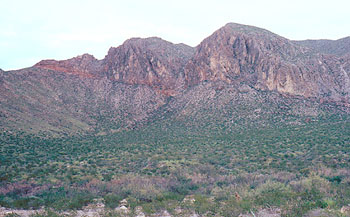| Thrust faults are described in most introductory textbooks as low angle reverse faults. Reverse faults are steeply dipping (more near vertical), thrust faults are closer to horizontal. 45° is a commonly cited cut-off between the two types of faults.
A more important difference is that thrust faults allow whole thick slivers of continental crust to override each other. When Africa collided with North America about 300 million years ago, for example, the compression created a complex series of thrust faults that put more eastern rocks on top of more western rocks. This great pile-up of rocks created the Appalachain Mountains, with a final result being that two point on opposite sides of the Appalachians are today only half as far apart as they were before Africa arrived. |



![]()